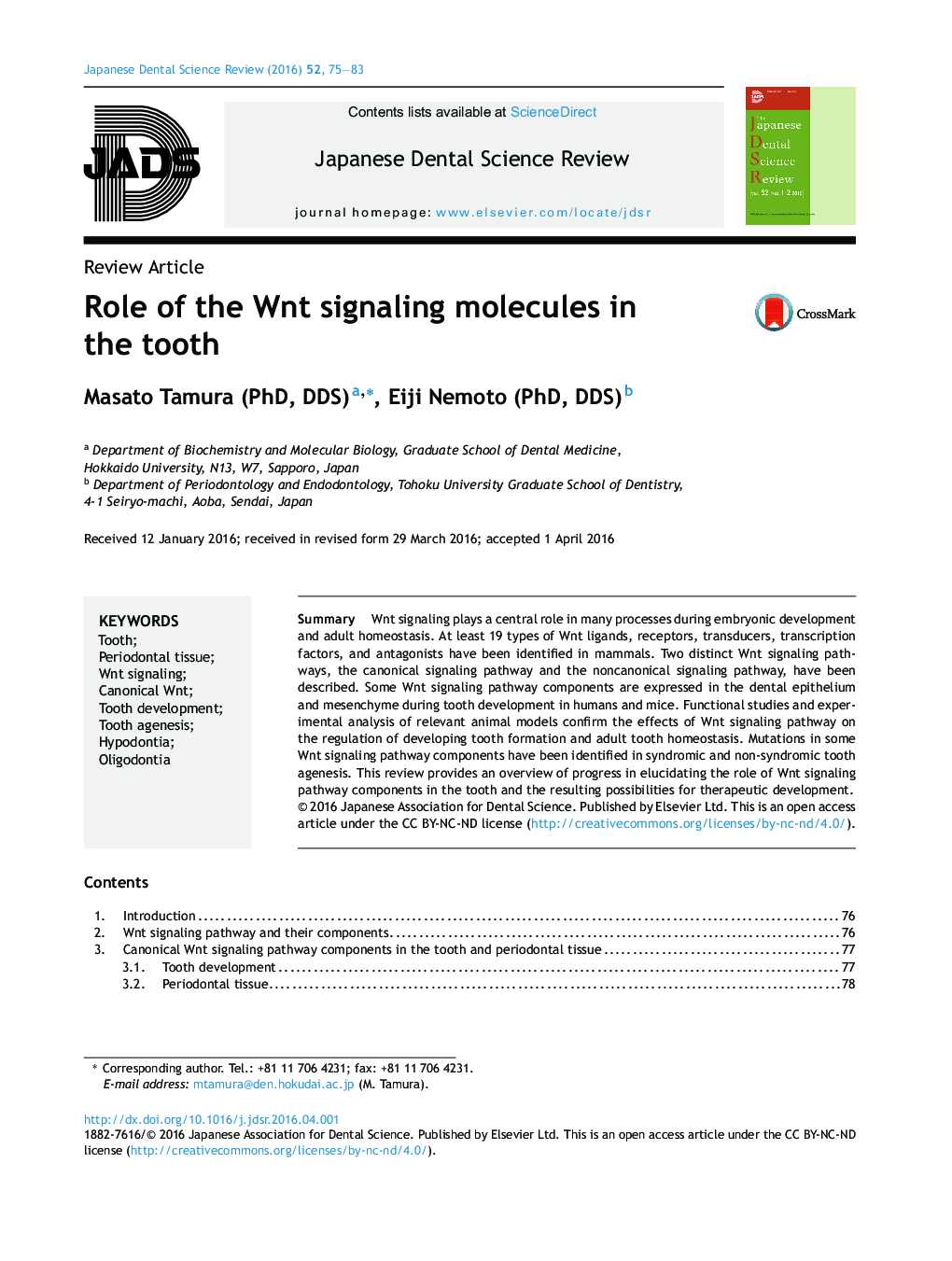| Article ID | Journal | Published Year | Pages | File Type |
|---|---|---|---|---|
| 3136557 | Japanese Dental Science Review | 2016 | 9 Pages |
SummaryWnt signaling plays a central role in many processes during embryonic development and adult homeostasis. At least 19 types of Wnt ligands, receptors, transducers, transcription factors, and antagonists have been identified in mammals. Two distinct Wnt signaling pathways, the canonical signaling pathway and the noncanonical signaling pathway, have been described. Some Wnt signaling pathway components are expressed in the dental epithelium and mesenchyme during tooth development in humans and mice. Functional studies and experimental analysis of relevant animal models confirm the effects of Wnt signaling pathway on the regulation of developing tooth formation and adult tooth homeostasis. Mutations in some Wnt signaling pathway components have been identified in syndromic and non-syndromic tooth agenesis. This review provides an overview of progress in elucidating the role of Wnt signaling pathway components in the tooth and the resulting possibilities for therapeutic development.
